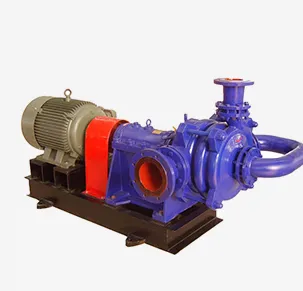English
- Afrikaans
- Albanian
- Amharic
- Arabic
- Armenian
- Azerbaijani
- Basque
- Belarusian
- Bengali
- Bosnian
- Bulgarian
- Catalan
- Cebuano
- Corsican
- Croatian
- Czech
- Danish
- Dutch
- English
- Esperanto
- Estonian
- Finnish
- French
- Frisian
- Galician
- Georgian
- German
- Greek
- Gujarati
- Haitian Creole
- hausa
- hawaiian
- Hebrew
- Hindi
- Miao
- Hungarian
- Icelandic
- igbo
- Indonesian
- irish
- Italian
- Japanese
- Javanese
- Kannada
- kazakh
- Khmer
- Rwandese
- Korean
- Kurdish
- Kyrgyz
- Lao
- Latin
- Latvian
- Lithuanian
- Luxembourgish
- Macedonian
- Malgashi
- Malay
- Malayalam
- Maltese
- Maori
- Marathi
- Mongolian
- Myanmar
- Nepali
- Norwegian
- Norwegian
- Occitan
- Pashto
- Persian
- Polish
- Portuguese
- Punjabi
- Romanian
- Russian
- Samoan
- Scottish Gaelic
- Serbian
- Sesotho
- Shona
- Sindhi
- Sinhala
- Slovak
- Slovenian
- Somali
- Spanish
- Sundanese
- Swahili
- Swedish
- Tagalog
- Tajik
- Tamil
- Tatar
- Telugu
- Thai
- Turkish
- Turkmen
- Ukrainian
- Urdu
- Uighur
- Uzbek
- Vietnamese
- Welsh
- Bantu
- Yiddish
- Yoruba
- Zulu
Telephone: +86 13120555503
Email: frank@cypump.com
Aug . 12, 2024 10:20 Back to list
Understanding the Components and Functionality of a Septic Pump System for Effective Waste Management
Understanding the Septic Pump System Essential Insights for Homeowners
A septic pump system is an integral part of many residential sewage management systems, particularly in areas where centralized sewer systems are not available. Understanding how septic systems work, particularly the role of the pump, is crucial for homeowners to ensure the proper functioning and longevity of their waste management system.
What is a Septic Pump System?
A septic pump system is designed to facilitate the movement of wastewater from the home to the septic tank and, subsequently, from the septic tank to the drain field. In essence, a septic system consists of three primary components the septic tank, the drain field, and the pump. The septic tank is a buried, watertight container that holds the sewage, allowing solids to settle at the bottom and scum to float at the top. Over time, while anaerobic bacteria break down organic matter, liquid effluent is discharged from the tank into the drain field through a network of pipes, where it undergoes further natural filtration.
The Role of the Pump
In some systems, particularly those located in areas with high water tables or sloped terrains, gravity alone cannot effectively transport wastewater from the septic tank to the drain field. This is where the septic pump comes into play. Typically, a submersible pump is installed within the septic tank. Its purpose is to move the effluent when the liquid reaches a specific level, ensuring that it is effectively sent to the drain field for proper disposal.
Types of Pumps
There are primarily two types of pumps used in septic systems effluent pumps and grinder pumps. Effluent pumps are designed to handle relatively clear wastewater and are effective for most residential systems. Grinder pumps, on the other hand, are equipped with a grinding mechanism and are utilized in systems where wastewater may contain solids that need to be reduced to slurry before transport. Choosing the right type of pump is crucial based on the specific needs of the household and the characteristics of the septic system.
septic pump system

Maintenance and Care
Regular maintenance of a septic pump system is vital to prevent failures and costly repairs. Homeowners should perform the following preventive measures
1. Regular Inspections Monitoring the pump and septic tank for any signs of malfunction or blockages can help catch issues early. It’s advisable to have a professional inspection at least once a year.
2. Pump Replacement Like all mechanical devices, septic pumps have a lifespan, usually ranging from 5 to 15 years. Understanding when to replace your pump can prevent unexpected failures.
3. Watch What Goes Down the Drain Proper waste disposal is crucial for the health of your septic system. Avoid flushing non-biodegradable items, chemicals, or excessive amounts of grease, as these can lead to clogs and pump damage.
4. Maintain Water Usage Since the pump relies on a consistent flow of wastewater to function effectively, excessive water usage can overload the system. Implementing water-saving practices in the home can reduce stress on the septic system.
Conclusion
A septic pump system plays a vital role in effectively managing household wastewater. By understanding its function, types, and the necessary maintenance practices, homeowners can ensure their system operates efficiently for years to come. Proper care not only extends the life of the pump but also protects the environment and public health by ensuring that waste is disposed of effectively and safely. If you're ever in doubt or notice a problem, consulting a professional is always the best course of action.
-
Horizontal Split Case Pump with GPT-4 Turbo | High Efficiency
NewsAug.01,2025
-
ISG Series Pipeline Pump - Chi Yuan Pumps | High Efficiency, Durable Design
NewsAug.01,2025
-
Advanced Flue Gas Desulfurization Pump with GPT-4 Turbo | Durable & Efficient
NewsJul.31,2025
-
ISG Series Vertical Pipeline Pump - Chi Yuan Pumps | Advanced Hydraulic Design&Durable Construction
NewsJul.31,2025
-
ISG Series Vertical Pipeline Pump - Chi Yuan Pumps | Energy Efficient & Low Noise
NewsJul.31,2025
-
pipeline pump - Chi Yuan Pumps Co., LTD.|High Efficiency&Low Noise
NewsJul.31,2025










